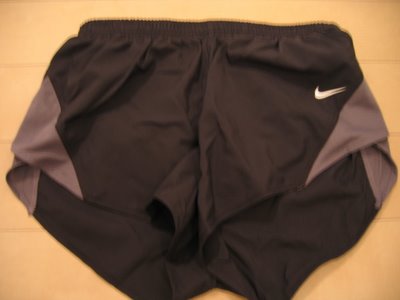After my knee flared up again yesterday I iced and stretched a lot. Today, I only made it 15 minutes before my knee went again. If there was any good news, it's that my left knee didn't hurt. We were running tempo (ペース走) though, so maybe I didn't stress it much.
Last week was meant to be my big week of training for the marathon. I ran a total of 29 minutes. Hmmmm. Maybe that's not the best way to prepare.
If I can't run this week I need to think of ways to stay aerobically fit without using my knees. I have read that for my right knee - which has chondromalacia - I can't even do running in water. If it really is as bad as I fear, I'm not meant to bend the knee.
I really thought the massage I had on Friday loosened me up enough to get my kneecaps tracking properly again, but I was too optimistic.
I wonder what will happen in the marathon if I can line up and finish. The lack of miles will hurt me, but I've done a lot of long runs before this injury hit, including a 2 hour run every Monday for about 4 months and the run that saw my right knee go was 30kms. So I have some miles in my legs. I just have a 4-week taper!
Here's a good piece on chondromalacia from the Cool Running website.
Runner's Knee
(Chondromalacia of the patella)
Description:
Pain around and sometimes behind the kneecap. One of the most common injuries among runners, runner's knee most often strikes as runners approach forty miles per week for the first time. Even after taking a few days off, the pain seems to come right back, sometimes even intensifying, after the first few miles of the next run. The pain often feels worst when running downhill or walking down stairs, and the knee is often stiff and sore after sitting down for long periods. You might hear a crunching or clicking sound when you bend or extend your knee.
The sure-fire test for runner's knee: sit down and put your leg out on a chair so that it's stretched out straight. Have a friend squeeze your leg just above the knee while pushing on the kneecap. She should push from the outside of the leg toward the center. At the same time, tighten your thigh muscle. If this is painful, you're looking at runner's knee.
Likely causes:
It's actually not your knee's fault at all. Blame your feet and thighs; for one reason or another they aren't doing their jobs properly. Your knee moves up and down in a narrow little groove in your thigh bone. It's a nifty design: when your legs and feet are working efficiently, your knee moves smoothly and comfortably with every step. But trouble appears when your kneecap moves out of its track, or rubs up against its sides. That trouble becomes pain when you factor in nearly 1000 steps per cartilage-grinding mile. Over time the cushioning cartilage around the knee becomes worn. That smarts. And that's runner's knee.
How did your knee get off track? Probably because of relatively weak thigh muscles and a lack of foot support. It's your thigh muscles that hold your kneecap in place, preventing it from trying to jump its track. Running tends to develop the back thigh muscles (hamstrings) more than those in the front (the quadriceps), and the imbalance is sometimes enough to allow the kneecap to pull and twist to the side.
Your foot, meanwhile, may not be giving you the stability you need. It's likely that your feet are making a wrong movement every time they hit the ground, and you're feeling the constant pounding and repetition of this mistake in your knee. Maybe you're overpronating (rolling your foot in) or supinating (turning it out too much) when you run.
Runner's knee is further aggravated by simple overuse. If you have steeply increased your mileage recently, you might consider holding back a bit. Likewise, back off on new hill work or speed work. Runner's knee can also be brought on by running on banked surfaces or a curved track. Running on a road that is banked at the sides, for example, effectively gives you one short leg, causing it to pronate and put pressure on the knee. Try as much as possible to run on a level surface, or at the very least give each leg equal time as "the short leg."
Remedy:
This is an easily treatable injury with a little patience. First, relieve the pain by icing your knees immediately after running. You can use commercially available cold packs or simply put a wet towel in the freezer before you run. Wrap the cold packs around each knee for about fifteen minutes to bring down the swelling. Take an anti-inflammatory like ibuprofen or aspirin after running, too, but only with food and never before running. Before bed, put heating pads or warm wet towels on your knees for half an hour.
Stabilize your feet. Make sure you have the right kind of shoes for your foot type (review our tips on shoe shopping). Consider buying a commercially made foot support in the footcare section of your drug store. If, in combination with thigh-strengthening exercises, the foot supports are not enough to get rid of the injury, see a podiatrist about whether you might need orthotics.

















































